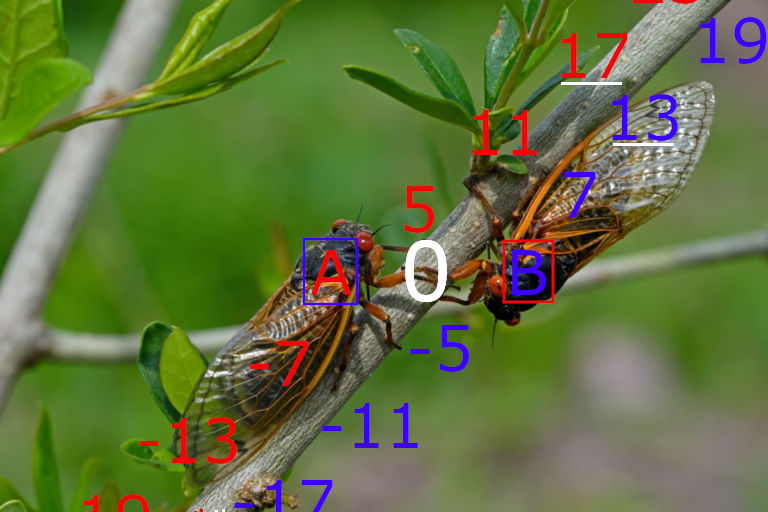The Twin Prime Conjecture, a fundamental problem in number theory, posits that there exist infinitely many twin prime pairs, which are prime numbers differing by 2. This post explores a novel approach to understanding this conjecture through the lens of the Semiotic Prime Theorem.

You guessed it… they also have hexagonal wing structures?!? It is weird to wonder if there could be a natural computational element at play. Or could you hack cicadas?
Understanding the Semiotic Prime Theorem
The Semiotic Prime Theorem simplifies the search for prime numbers by focusing on a specific form: all prime numbers greater than 3 can be expressed as either 6k + 1 or 6k – 1, where k is an integer. We can represent these forms with two sets:
- Set A: {6k – 1 | k ∈ Z} (representing numbers of the form 6k – 1); which is also {6k + 5 | k ∈ Z}
- Set B: {6k + 1 | k ∈ Z} (representing numbers of the form 6k + 1) which is also {6k + 7 | k ∈ Z}
The Semiotic Prime Theorem states that any number in sets A or B, which is not a product of two numbers within these sets, must be prime.
Twin Primes within Semiotic Sets
Twin primes, with the exception of (3, 5), always consist of one prime from set A (6k – 1) and its twin from set B (6k + 1). This relationship arises from the inherent structure of primes as described by the Semiotic Prime Theorem.
Symmetry and Mutual Exclusivity
Sets A and B exhibit an intriguing symmetry: they are symmetrical around zero. For every prime p in set A, there exists a corresponding negative prime -p in set B, and vice versa. Furthermore, sets A and B are mutually exclusive; no number can belong to both sets simultaneously.
The Prime-Composite Density Ratio
Let’s introduce some key terms:
- Prime Density (ρ(n)): The number of primes less than or equal to n within sets A and B.
- Composite Density (σ(n)): The number of composites less than or equal to n generated by products of numbers within sets A and B.
As n increases, the density of composites (σ(n)) grows faster than the density of primes (ρ(n)) due to the quadratic nature of generating composite numbers (products of primes). The density of primes decreases logarithmically, as established by the Prime Number Theorem.
The ratio of prime density to composite density can be approximated as:
ρ(n) / σ(n) ≈ (2 / (3 log(n))) / (n^2 / log(n)) = 2 / (3n^2)
The Proof
The key observation is that as n approaches infinity, the ratio of prime density to composite density approaches zero. However, the symmetry and mutual exclusivity of sets A and B guarantee that neither set will ever be devoid of primes.
Here’s the reasoning:
- Dirichlet’s Theorem: Dirichlet’s Theorem on arithmetic progressions ensures an infinite number of primes within both sets A and B, as 5 and 7 are relatively prime to 6.
- Symmetry and Balance: The symmetrical relationship between sets A and B ensures that the primes are distributed between the sets in a balanced manner.
- Non-Zero Relationship: The fact that the ratio of prime density to composite density never reaches zero implies that there will always be primes in either set A or B as n increases.
- Twin Prime Existence: Since twin primes, by definition, consist of one prime from set A and its twin from set B, the continuous presence of primes in both sets guarantees the continuous existence of twin primes.
Conclusion
The symmetrical structure of sets A and B, along with the logarithmic relationship between prime and composite densities, suggests that there will always be a non-zero ratio of primes to composites within these sets, regardless of how large n becomes. This continuous existence of primes in both sets, coupled with the pairing nature of twin primes, provides a compelling argument for the existence of infinitely many twin primes, confirming the Twin Prime Conjecture. This approach, grounded in the Semiotic Prime Theorem, offers a unique perspective on this long-standing problem.
